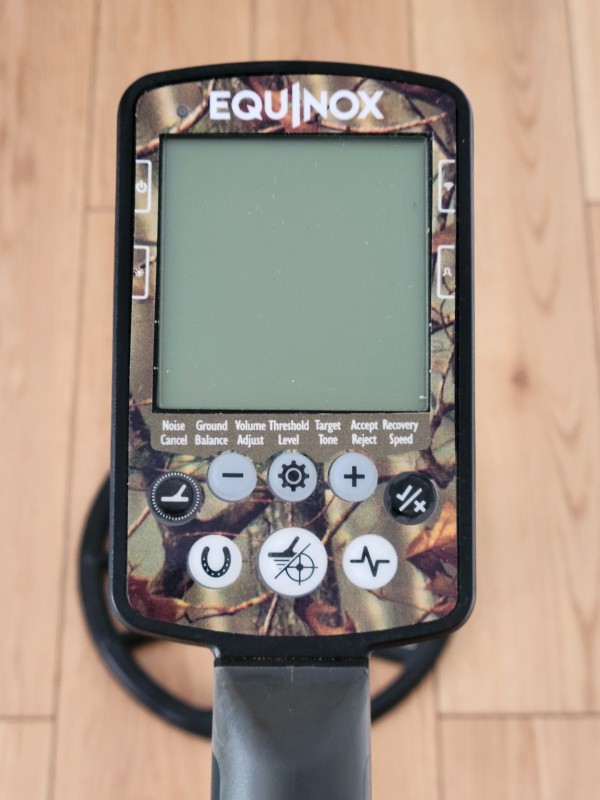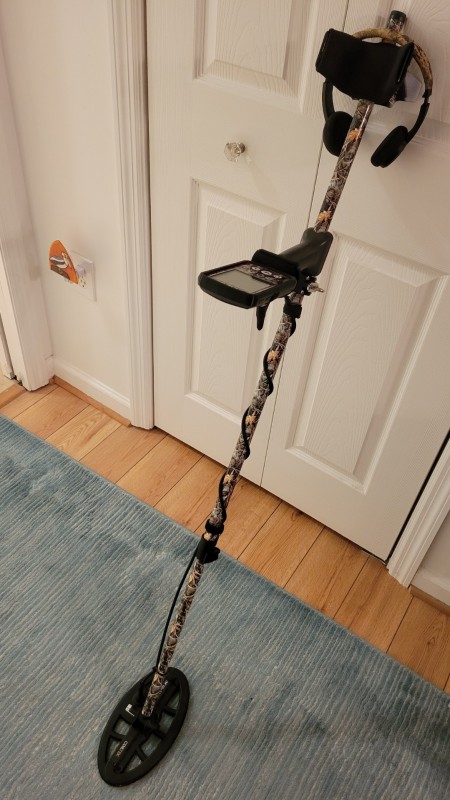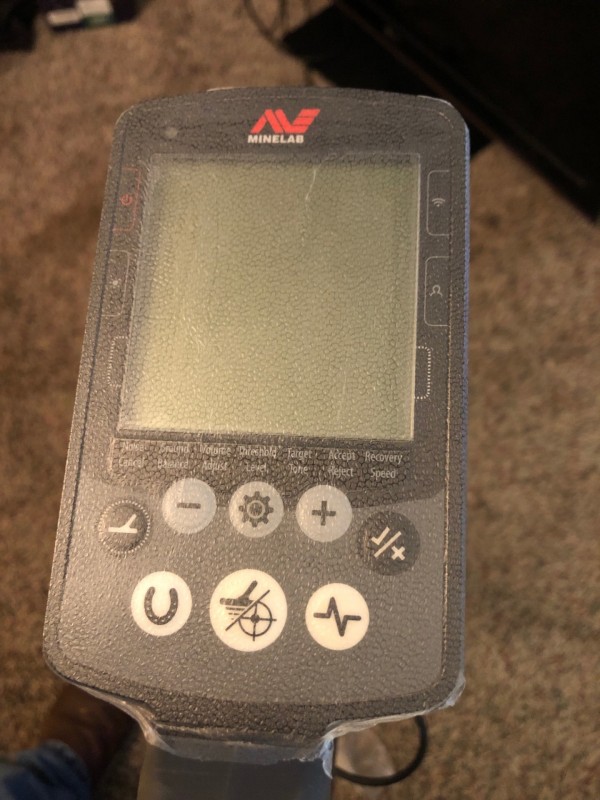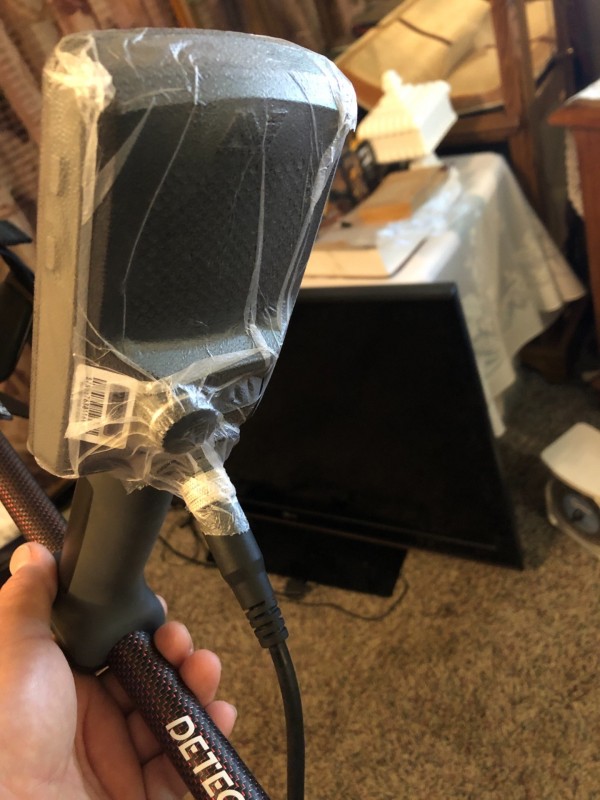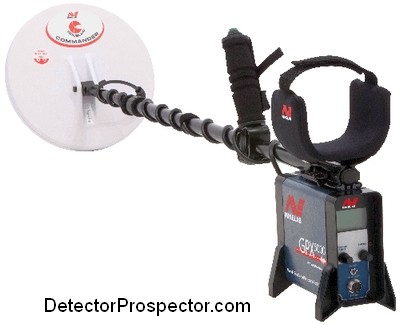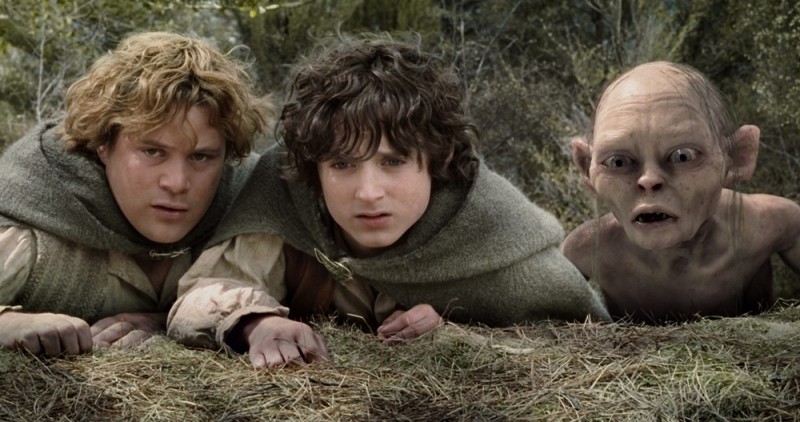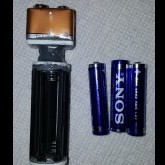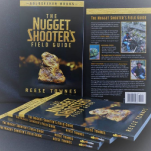Leaderboard
Popular Content
Showing content with the highest reputation on 08/29/2021 in all areas
-
Sourdough Scott and I have been detecting hillside that has never been mined before and doing quite well with finding gold. It confounded us both as to why this location was left untouched by the early miners. When I discovered the answer it sent chills down my spine. I hate it when I start finding a lot of gold in a small area because that means I have to dig all the trash even when I know it's a tin can, shovel head, copper still, or a locomotive and I am basically a very lazy prospector. To make matters worse this spot must have been where the 1927 world champion squirrel hunting competition took place as there is an extraordinary quantity of lead and brass. There are also bits of steel cable, nuts and bolts, Caterpillar parts and hobnails from numerous logging operations which occurred there through the years. One bit of trash that caught my attention was a pristine 50 caliber musket ball as they sound exactly like a large gold nugget. I put it in my pocket and continued on. Then, not far away, I found the remains of an ancient musket. I knew this had the makings of a Detector Prospector story so I took the ball and musket home for some forensic research. Here are the horrifying results of my research findings. Upon microscopic examination of the musket ball I discovered a minute speck of fossilized blood. By using the DNA identification app on my smarty pants phone I discovered it was blood from the much feared Plumas Mammoth Grizzly! I then began analysis of the musket. By getting my 51 caliber finger stuck in the 50 caliber barrel I was able to conclude beyond any doubt that the musket was the very one that fired the bloody ball. I then closely examined the musket exterior and made three shocking discoveries! One was a patch of dried blood that proved to be from a human male of about forty years of age, dating from 1852. The next was another bloodstain that matched that which was found on the musket ball, identified as being from a Plumas Mammoth Grizzly. The third discovery (and this is where it gets scary) were bite marks which by careful measurement proved to be that of a grizzly over 11 feet tall and weighing nearly a ton! The only logical conclusion from my research is that the doomed prospector discovered the same rich deposit that Sourdough Scott and I found, became distracted with finding gold and not paying attention to his surroundings, mortally wounding the grizzly when he was attacked by surprise but was disassembled by the grizzly before it succumbed from it's wound. That is why this rich strike has remained unworked for 169 years.16 points
-
Found this article from 2018, I missed it at the time so others may have too, pretty interesting, Looks an easy find for a metal detector but I'd imagine most would dismiss it as junk and move on without digging. Workers found large number of ancient coins at a construction site in Baishui county of Weinan, Northwest China's Shaanxi province, on Nov 9, and archaeologists said most coins belong to Song Dynasty (960-1279). Zhao Zhangfeng, director of Baishui cultural relics office, said that police received the report of the discovery around 11 am on Nov 9, and police soon arrived at the site and cordoned it off. Archaeologists later arrived at the site and collected about 100,000 coins, weighing 460 kilograms. A few coins date back to Tang Dynasty (618-907), and most are of Song Dynasty. Zhao said that few people could have so many coins at that time, and initial analysis showed that the coins belong to the old-style Chinese private bank that buried the coins during wars. Continue reading here: https://www.chinadaily.com.cn/a/201811/13/WS5bea3daca310eff30328853b_1.html7 points
-
Yes I posted this video last Fall and have not watched in many months. Not sure why, as this is what dreams are made of. Every one of us thinks about the day this will happen and I just so luckily was there to catch it. Even though it's not my own find, don't you think I too was a little excited. Someone is going to post a video this year of a monster found with a GPX-6000, it's just a matter of time. This particular piece would have been heard with a GPX-6000 and or any other big Minelab PI, so part of it was just getting your coil over. Realize you better be in shape as well since there was some serious hard digging going on. Man it just excites me to watch it...enjoy.6 points
-
Hey Goldseeker5000 and all, Thanks for all the continued comments. This method, whatever you want to call it, can be used in many locations like you mentioned. At one point in my metal detecting for gold phase, I concentrated in mine dumps. The same method is used, but mostly just raking as that tailings are normally on a slope and gravity can be a real help. Using this method on mine dump can be rewarding, but you have to understand how they dumped the material and what is where. Majority of all mine dumps is waste rock, wall rock/country rock and low grade ore. Normally the best, high grade ore would be placed into high grade piles, not tossed into the dumps. However, when they would hand steel or blast and muck the ore into carts or whatever they used to moved the material at that site, high grade ore could be missed in with waste rock. Normally, they would dump the material in layers, so if you get into a good layer, which is normally where there was some high grade stuff missed with waste, you can do well. I would only target "free milling, coarse gold" locations. I didn't mess much with sulphide ores or complex ores that required chemicals, but rather in locations where it was above the zone of oxidation and Mother nature done most of the work for you (physical and chemical weathering) and left the good stuff behind, GOLD. Most of these locations were shallow, free mining gold mines, primary commodity being Gold, secondary could be Silver, Copper or whatever in any order. Keep in mind, some good gold mines gold listed in the databases as Silver or Copper as Primary and Gold like the secondary or third listing. High end VLF's normally 50-71khz worked best. This is where the Fisher Gold Bug 2 really stood out in my opinion, the ability to find very small particles of gold within quartz, ironstone and ore. One of the last ventures on a dump was one of my best, finding many pounds of small gold laced ore right on the outer, surface of the dump. I'm thinking they got sloppy or something happened. All I had to do is detect the surface and rake a few inches to stay within the best layer, once I got beyond that, it was nil. I did find another layer on the other side of the dump that was about a foot or so deep, but much smaller and didn't last very long. Hope this helps a bit, Rob6 points
-
5 points
-
Hey Guys, I don't want to get too far away from the placering mostly in a gulch, but a few bits of advice for any new mine dump hunters- If the dump is a good slope, it's always best to dig a small shelf below the target area, as I have chased targets all the way down the hill, even lost a few. Only dig a tiny bit at a time, small targets and fragments of gold will easily fall down deeper into the dump, so try not to get too crazy when you dig. I've dropped small fragments of gold, very crystalline out of my hand and never recovered them due to it working deeper into the dumps rocks. I normally always started at the bottom of the dump, as a lot of times Gravity and Mother Nature has worked some of the best gold down near the bottom edge, kind of like dredge tailing piles (top and bottoms seem to be best). Just a few pointers from experience and lost gold.5 points
-
I found this strange copper ring near a sand play pit in a park. The writing looks medieval. It is one word repeated inside and out of the ring and is gibberish to me. I wonder if it has a mystical meaning. The ring extention has been done very crudely and certainly not by a jeweller. Can anybody help with suggestions? Thanks!4 points
-
Is yours gold or is it fake? You may have to keep finding them to get the real ONE.4 points
-
Just helping out a partner 🙂 More photos on Gus's site. https://www.naturalgoldtrader.com/222-p-98-Gram-Humboldt-County-Nevada-Big-Gold-Nugget.html3 points
-
Yesterday My buddy and I got up early to beat the heat (76@6:00am). We decided to hit the other side of the swim club that was fenced off a week ago, but now the fence was removed and open to the public. I was running the new silver umax and my buddy the 800. The first hour for me was a bust, just a bunch of pennys. My buddy was a 100 yards away and found 2 mercs and a bunch of wheaties. A little hot and frustrated, I walked another 100 yards to an odd looking small tree. This spot most people would have walked by. I'm thinking kids were climbing up and coins were falling out of their pockets. Maybe two swings and I hit a rosie. I stood up checked the hole and about a foot away I got a strong hit, Out comes a 1941 walker 1/2 dollar. At that point my buddy joined in on the fun. Two more hours of hunting in the now 100 plus degrees Yielded a total of 11 silvers, 39 wheaties, lots of pennies, kennedy 1/2 dollar. Oh and your good old trash. Not to shabby for 4 hours of sweat. I was liking the old tesoro's even more (would I have found them with the 800 Yup) but what fun would that be. TOTALS 5 Roosevelt dimes, 4 Merc's , 1 Washington, 1 walker 1/2, 39 wheaties3 points
-
yea, I bought an old bunch of Ipad screen protectors from a big box store when the model was old and they just wanted to clear the screen protectors out, I got them for 7 cents each so I grabbed about 30 and just cut them to size for my detectors.3 points
-
3 points
-
Big open area's are ideal with easy access to a main path or parking lot. People usually lay out on their lunch break. If its a very old park Google it, you might find some older photo's that will help you narrow the good spots down. Don't limit yourself to sunbathing, look for trees that the rug rat's climb and lose coins. Today's kids are not climbing tree's(helicopter moms), but way back when it was good fun. Think activity like frisbee, horse shoe's, pickup game of football. All of these things result in lost treasure. And the best tool you can use is the historic aerials site to look back in time. Good luck !!!3 points
-
Mh, the silver depths were under 5 inches, mostly 3'' to 4''. The walker was at 3 1/2''. Oddly I haven't dug a silver over 6 in a couple of years. GB, I sure wish you could have managed another day, We would have had a hell of a time. Where we found the silver oddly was an area that I would have walked past, but the heat dragged me to the little bit of shade. Have NO idea why those coins were dropped in that 50'x100' spot. The walker is the third from that place. I do have a question on this. All the walkers I have ever dug were from 1940,1941 and 1942 nothing above or below these dates. my buddy has the same experience oddly. Just wondering why, maybe just my area. The Kennedy 1/2 is a 1980p. Not sure if you have time in the late fall, but sure would like to take you there again before the bulldozers level it.3 points
-
Small update the wedding band was gold plated... cheap @#$%@%!! what kind of person would buy a plated wedding band? So 1 1/2 good finds for the night.3 points
-
According to the picture of the 12 "DD coil .. I type that this coil has a size somewhere around 8.5" x12 "or 9" x12 ".. The practical depth of detection will be significantly greater than the older 11 "DD coil measuring 7x11" .. because the 9 "wide coil will still be deeper than the 7" width coil .. I'm talking about practical detection..because in addition to the depth of detection, the 3D depth separation will also improve from the width of the coil ... which will ultimately bring a number of detectable targets ... even on variously mineralized terrain .. ... note that all modern strong and fast detectors excellently separate 3D on 9 "-11" coils ... and therefore these coils are used as standard coils ... also for their depth and separation .. properties .. The shape of the new Fisher 12 "DD reminds me of a coil of 10x12" SEF ..what I consider a good design ...3 points
-
3 points
-
Haven't done much digging at all, heat and humidity is brutal and I figured the finds can wait it out. Hit an old park near my house, took the Tejon out with the 10x12, not a whole lot of iron but a lot of aluminum surface trash so I was hunting for the tinier targets. Ground is really hard packed as they have car shows and gatherings so it was like digging cement, can't make bit holes there and forced to make little flaps and fishing the targets out and I ended up suffing the IH 1889. Ring seems very old, tested at 10k. I have a close up on the mark.2 points
-
It was in tiny unrecognizable pieces mixed with petrified Plumas Mammoth Grizzly scat. Sorry.2 points
-
Mh, I think everyone has there own idea of how coins sink into the ground, but from my records/experience, I find older silver coins shallow. For instance I'll dig a 1984 dime at 8'' and a few feet away I'll dig a 1919 merc. I for the life of me can not figure out why all of my silvers come up shallow, but they do. I can count on one hand how many were over 6+ inches. If your hunting parks that are only 20 years old, I would set up your machine to run shallow first and not bother trying to hit max depth. See if your scores improve and adjust accordingly. Sometimes running a little to hot can blow past your intended target, especially in foil/ aluminum rich areas. Most of all do not rely on vdi, Pay attention to the tones your machine is giving you. These tones do not lie. It takes a lot of practice to not just glance at the screen for help. I fall into that trap every now and then, It's OK. After time your brain will tell you what a good signal is even if the vdi # are not what you expect. Good Luck and hope you will post your next silver find.2 points
-
Klunker, your story reminds me of an excerpt from a letter penned by a Fortyniner named John Paul Dart, written on Dec. 26th 1850 from Chinese Camp. "The miners generally are amusing themselves killing deer and grizzleys. One miner got hold of an old grizzly the other day, and vice versa. The bear tore him up pretty bad, and left him..." Oh, the stories some of the stuff we find could tell...2 points
-
That’s what I put on all my detector screens, but just the screen area itself. First thing I do with a new detector these days is apply the screen cover. I have a pack of old Kindle ones that are thicker than most, that I cut to fit.2 points
-
Sounds reasonable to me!! Nice gold and relics! Let us know when you find the Grizz bones! I know a guy....😁👍👍2 points
-
I recognized it right away ! Think I might have hobbit blood..but dwarf isn't out of consideration .. I think there were 7 but only 1 to rule them all............heyyyyyy they filmed those down under , might be some "real" ones to be found ....so YEAH ,,,DON'T put it on !2 points
-
That is usually something that you would find in Europe during WWII, they were trying to save on metals back then. Grandfather showed me several rings that were like that. Nice finds for your work, and good luck on your next hunt.2 points
-
Never think it's just another beer can!2 points
-
Reading the title of the thread and it not sure if it is correct for what we are babbling on about. Aluminum is a mid to high conductor and outside of using a concentric coil to combine or average the conductivity of 2 different targets your not really unmasking. DD coil you will need a small coil and a machine with good recovery speed to pick through the targets but anything below will be hidden.2 points
-
Simon..the concentric coil is very important..to the winding of the coil itself is at a certain distance from the surface of the mineralized terrain ... because when the coil winding is too close to the mineralized surface .. then the VDI target of the low-conducting target passes into the VDI iron zone .. This is especially true if you work with a set discrimination ... and so you can cross such a target ... If you move the coil to 3 cm or more from the surface of the mineralized terrain. The VDI of the low-conducting target returns to the Color + VDI zone. on All metal it may not be so visible ,,..... DD type coil does not have such a problem .... test CC and DD coils on mineralized stone... and low conductors...2 points
-
The DI sticker covers/protects the buttons without issue if put on correctly which isn't easy. 😀 It does not protect the screen but those protectors ML provides will. The screen is pretty tough itself.2 points
-
Dogodog I’m sorry to report to you that half dollar is not old ! Due to the fact that’s when I was born. So I hope you understand that when you call that coin old that cuts deep in a pain I can’t express. That’s some great finds you made. Chuck2 points
-
Good going Pinger!!, Yes, definitely worth a try!! I have always had my speaker holes; at a minimum, covered with vinyl decals! (I never use the speaker on detectors)! No overheating issues with that alone! And no beach sand and water accessing the holes! I only ever had one "overheating"?? Issue last summer, on the beach, in the middle of a 3 hour hunt! (🥵👎🥵) It was too much for me, and the detector! But at that time, I had the black nylon cover on it! I have since ditched that in favor of a edge bumper and screen protector decal! And, I refuse to bake myself again in those conditions! Not worth it! (Full disclosure, ML replaced that Pod under warranty, and never told me for sure, what the problem was!) This is, IMO, a twofold problem with modern detectors!! Modern design is dictating smaller, lighter housings for the brains of the machines! The tolerances are tight, and thermoplastic is a poor substitute for heat dissipation! Now, couple that with, in most cases, a black, or dark color housing, and the results are predictable! There are solutions, but they cost more to manufacture, and like the breaking coil tabs, and leak issues that have been reported; are "few" enough for ML, that they are not going to change anything at this time! The good news is, after the warranty expires for many, the modding and ingenuity of our community will kick in and solve these issues for the people having them! I already have a few in mind! One is to simply spray paint the case a light, reflective color, to reflect a percentage of outside radiant heat! Another would be to install an external heat sink to draw heat from inside the case! Not hard to do, for many out there! Whatever the problems are, and I've said it here many times, as long as ML repairs; and in most cases replaces the parts under warranty, I can live with that! That's not to say that they shouldn't be paying close attention, and work on changing a few design "flaws" with the Nox, but I don't expect to see that, until the next production model!👍👍2 points
-
Ahaa! You were holding out on me, just letting me hunt the dregs while saving the garden spot for your buddy.... Five silvers in a day with one being the beautiful Walking Liberty half -- my favorite coin design of all time. When I was detecting with you a couple days earlier I was thinking "now I know what it was like back in the 1980's when high performing detectors were just starting to hit these unsearched, frequented spots." You proved that to the 9's. I thought you said the Silver umax was brand new? Didn't take you long to get it looking grungy. BTW, what's the date on the clad Kennedy half? Well done!2 points
-
As Valens Legacy wrote, if you are out in the sun and the screen starts to fade or becomes hard to read the machine is overheating. Happened to me using a commercial cover. It is very likely that what you are proposing will do this. I put one of the Detecting Innovations stickers over the keypad and a bumper around the box, that's it.2 points
-
2 points
-
2 points
-
This is not intended to get into every nitty-gritty little detail, but instead is a brief overview for those unfamiliar with the Minelab Pulse Induction (PI) detectors. The units released so far are the SD2000, SD2100 (and V2 variant), SD2200D (and V2 variant), GP Extreme, GP 3000, GP 3500, GPX 4000, GPX 4500, GPX 4800, and GPX 5000. The Minelab SD2000 was the first of the series, a genuine breakthrough in metal detector technology. It is the basis on which all the other models were developed. It was the first true prospecting pulse induction metal detector and it had a major impact in the Australian goldfields for which it was designed. The main drawback was a definite lack of sensitivity to nuggets weighing under a gram or two. The SD2100 and SD2100v2 are fairly simple manual ground balance units that refined the SD2000. The frequency could be manually adjusted to avoid interference from outside sources, such as a nearby detector. The SD2200d and SD2200v2 offer automatic ground balancing or a fixed/locked ground balance. They also introduced an iron disc feature of dubious reliability, audio boost, and automatic frequency offset. The GP Extreme offered enhanced sensitivity to small gold that was lacking in the earlier units. Much of this came about from Minelabs patented dual voltage technology (DVT) which was introduced with the GP Extreme and is featured on all subsequent models. There were quality control issues with the unit however and so performance varied on GP Extreme detectors. The GP 3000 is essentially just a refined GP Extreme and the GP 3000 performance is more consistent between units than was seen in the GP Extreme. Threshold smoothness was improved to be less erratic. The GP 3500 offered manual frequency tuning to help eliminate electrical interference and three tracking speeds for the automatic ground balance system. A button was added to the handle to allow for easy switching between the manual and automatic ground balance modes. The GP 3500 was the last of the analog models in the series. Where it all started - the Minelab SD2000 "Super Detector" The GPX-4000 was a break from the past, going to a digital control system. This allows for more adjustments but also more complexity. The GPX models can attain smooth thresholds on par with the best VLF units. A major advance is in the form of various optional "timings" that allow the detector to be customized for various types of ground mineralization and hot rocks that might be encountered. The earlier SD and GP models used a sealed lead acid battery with a 4 pin battery cable. GPX models feature a Li-Ion battery with 5 pin cable that is not compatible with the earlier models. The GPX-4500 is a basically a refined 4000. A pattern develops by now in that Minelab tends to make a major model revision, then follow up with another model that is just a refinement of the earlier unit. Model releases come about every two years with major changes about every four years. The Minelab GPX 4500 was extremely popular and the next model release was delayed to the point that two models came out. The Minelab 4800 was intended as the next release, but before it hit the market developer Bruce Candy came up with a couple new refinements different enough to warrant yet another model, the GPX 5000. The 4800 therefore became a sort of "non-model" as most dealers and users focused on the GPX 5000 as the new top-of-the line detector. The main change is a wealth of new timings allowing the GPX 5000 to get optimum performance in many varied ground conditions. The new Fine Gold timing in particular offers the ability to pull gold out of ironstone hot rocks that previous models missed. Minelab SD2200v2 pulse induction (PI) metal detector I disagree with those that say you can get more depth on large gold from earlier SD units than from the latest models. Having used all the models the largest improvement I've seen over time is vast improvements in threshold stability and the ability to adjust for more varied circumstances. It may be that in a particular location an SD will do just as well as a GPX. But not where I hunt. My SD units all had the famous Minelab "warble" whereby the threshold constantly wavered. This meant that small nuggets or very deep larger nuggets had to give enough of a signal to break through the waver. A far cry from listening to a rock solid threshold for the faintest whisper or "break" in the threshold. You can get just such a rock solid threshold with the GPX units. It is not that the GPX goes deeper, it is that you can hear nuggets you would miss with an SD as they could not be discerned as clear signals. More important on my ground was that my SD units could not tune out the intense magnetic basalt cobbles we have to contend with. The cobbles give a faint gold hit. So you either dug them all (impossible) or ignored the faint signals. But some of them were small nuggets or very deep larger nuggets. When the GPX arrived at my property I saw so many more small nuggets and deeper large nuggets come out of areas well hunted to the point of being "hunted out" that it was obvious the GPX had a significant edge. I'm not talking a nugget or two - I'm talking pounds of gold. The new GPX timings can allow for a clean solid threshold in areas where that was impossible with earlier units. Those that do not hunt such locations do not see the value in a GPX. Those that do know what I'm talking about. There is no way I'd go back to using an earlier model than the GPX-5000 by choice. Minelab GPX 5000 - pulse induction metal detector technology refined It should be noted is there are quite a few people modifying older SD units to get better performance on par with later units, and I'll admit these modified units are a wild card. Some swear by them and I'm not going to doubt them. But modifying older detectors is beyond where most people want to go so I think there is little doubt these units will only see use by a certain hardcore group of knowledgeable detectorists. The GPX 5000 has refined the platform to the point where realistically it is hard to think of ways the unit can be improved from a detecting standpoint. The only obvious deficiency is the ferrous discrimination system. While it does have its uses the ferrous discrimination on the Minelab PI detectors is notoriously unreliable and only to be used when absolutely necessary. Its use will inevitably cause gold nuggets to be left in the ground, misidentified as iron or steel. This area has been so resistant to improvement, however, that I look more for advances in the physical package as my most desired area for improvement. The general control box and rod design with backpack mounted battery has not changed since the original SD2000. Development of a GPX type detector housed in a package more reminiscent of the new Minelab CTX 3030 would be a major advance in the usefulness of the lineup with no actual change in performance aspects of the electronics. It has been well over two years since the GPX 5000 was released, and so I do not think it will be too long before we see what Minelab has in store next for nugget hunters. ~ Steve Herschbach Copyright © 2013 Herschbach Enterprises P.S. When I wrote this article in 2013 I had no idea that two more years would pass before we saw what Minelab had up next - the Minelab GPZ 7000. It turned out that Minelab also thought the GPX 5000 had taken the pulse induction as far as it could go, so the GPZ 7000 features new ZVT technology. The biggest surprise for me however was that Minelab may have paid attention to my "GPX in CTX housing" comment above. That may or may not make some people happy! And the GPX 5000? Still in production as the top-of-the-line PI from Minelab!1 point
-
1 point
-
There are some parks around me that aren't heavily hunted (or hunted at all), and I think they're similar to the kind of place you just hunted. But they're fairly new, probably having been established in the past 20 years or so. I hate digging and hate it even more when in a public park. So when I get a possible coin target at 8+ inches, I'm generally inclined NOT to dig it...unless I think there's a good chance it's silver. But if you're finding silver that shallow, that is very reassuring to me. Of course, I know a lot goes into how deep an old coin might be and our variables are going to be very different. But at least I know it's possible to find silver in a public park that's shallower than 6 inches.1 point
-
Looks like screen protectors are PET (polyester film) with silicone adhesive so it doesn't react with the plastic surface and damage or leave a residue. Acrylic adhesive would be really bad on the face of the detectors so keep that in mind. Saw some security film in rolls that apply like the car window tints where you use a little soapy water and squeegie out the bubbles. Anyone know what that adhesive is and it is removable?1 point
-
Does anyone know if the Garrett stock coil is epoxy filled?1 point
-
1 point
-
I think the real challenge would be accomplishing the heat sink while maintaining the Equinox' water proofness.1 point
-
Sometimes there are reasons for that and sometimes it's just randomness trying to trick us. I know I've found what seems to be (note "seems to be", not to be confused with "surely is...") an inordinate fraction of early 40's Wheat pennies. In one homesite I think it might have the explanation that children, probably in the late 40's, were playing in the yard with pennies and carelessly dropping them. But even ignoring those, at other sites I get a lot of the early 40's and not very many late 40's or even what might seem more likely -- the 50's. Certainly the Walkers from the 40's were minted in greater quantity than those from earlier years (and pointing out to those not so familiar with the WL series, they were last minted in 1947): ~330 million in the 40's compared to ~150 million in all prior years (1916 to 1939), so a bit more than twice as many. In general, the first half of the 1940's (most of which we were involved in WWII) saw the mints producing a prodigious amount of coinage of all denominations compared to earlier times. Find several more Walkers and we'll be able to refine our hypotheses.1 point
-
This dig, detect, rake method is what I call the layering technique or layering method, and yes it can work virtually anywhere. I was up at Libby Creek in Montana and detecting on the hill many years ago and the excavator operator kept telling me you can't detect there because I would be in the way. I moved and was was again told you can't detect there. A third time moving and I was again told you can't detect there. I got annoyed at this, looked around and saw a spot on the slope edge of the road leading up to where the club was digging material out of a hole for the trommels to run, and asked him is this spot ok, or do I need to move from here too? He said that spot is ok. I picked a spot of the slope and gridded off a 6 foot wide by 7 foot long spot and started detecting slowly and when I had it covered, I raked a layer back towards the bottom. I repeated this process about 7 times and finally got a signal and it was a small nugget. So, yes you can apply this anywhere. It works! I speak heavily of this strategy in my book.1 point
-
What about the screen protectors they have for tablets? Been thinking of getting some and laser cut them out so they fit nice around the buttons. Just need some motivation....1 point
-
Well, I look forward to seeing more on this coil, I know exactly what a new coil can do for a detector, so I'll never dismiss the benefits of a different coil and it's good to see something actually new from First Texas, even if it is just a coil. Were the early prototypes no good Mike? Just the way you said you've got a couple of them somewhere lost.. or do you already have a newer better version? Cipher, the 11x7 is probably deep enough for an 11x7", I replace it with bigger coils as it just doesn't cut it for coins in my area that are quite deep, it either misses them or ID's them as iron when other bigger coils do much better, and many manufacturers seem to be supplying the 11" round these days as the stock coil which works better for me. As we know though every size/shape has benefits over others... they can't please everybody. I think this new coil looks pretty neat.1 point
-
The secret to depth is is the amount of of time the signal has been on the target. This means the the lower the frequent the more time the target has to build up the eddy currents. The modern VLF tend to go higher in frequency than the old VLF. My deepest nugget 5 Oz was 19 inches. with an old 7000Hz VLF detector. The deepest Specimen was over 2 ft with a GP 3000 but it was 16 Oz in a 3½ Kilo lump of Quartzes. I Looked at the frequency specification of the GPZ 7000 and the GPX 6000, the 6000 is double that of the 7000. So if you want depth the 7000, but depth is only part of the requirement to finding gold both size and easy finds.1 point
-
Check this coil out. Thought of this post when I saw it.1 point
-
This subject has been hit many times! And based on this small sample of responses so far; as in the past, it's not a big enough problem for ML to change their designs at this time! It is deemed to be "user specific" for whatever reason! But, as long as they are under warranty, ML is replacing the parts! So I am ok with that, for now! According to one of the main North American Reps for ML, it's an issue of overtightining, and/or lack of replacement of rubber washers on a timely basis! Weather we believe that or not, appears to be our issue, not theirs! They, like many companies, are not going to admit fault, and have a flood of claims with no end! Shareholders are not willing to take that kind of hit! They will just honor the warranty (Thank you!), and quietly address any flaws in their next production model that replaces the Equinox; ideally, and hopefully! None of us that have had this problem, have to be happy with this, and have the option to buy elsewhere! But I don't think ML will loose any sleep over a small amount of lost sales! This has been a record earnings year for them, and as long as gold remains high, will continue into the foreseeable future! This all, of course, is one man's opinion, and in no way speaks for any of you great people on the forum, or others! I just wanted to lay it out for anyone who may not be aware of the background thus far! These are only the facts as I know them, and there are others here that know much more about the internal workings of company sales and service, than myself! Including having to answer to investors for such things!👍👍1 point
-
At this point I will evaluate when or if it comes out. Right now it's like wishing your rooster will lay an egg.1 point



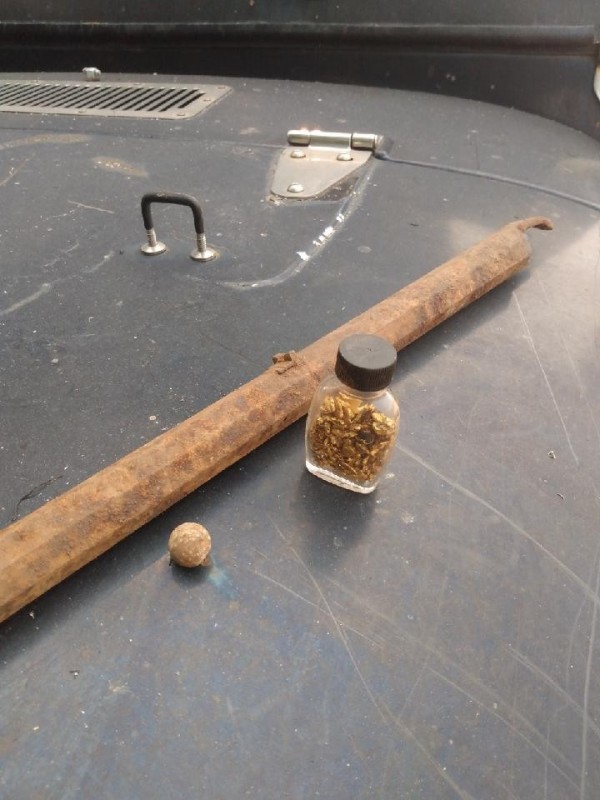
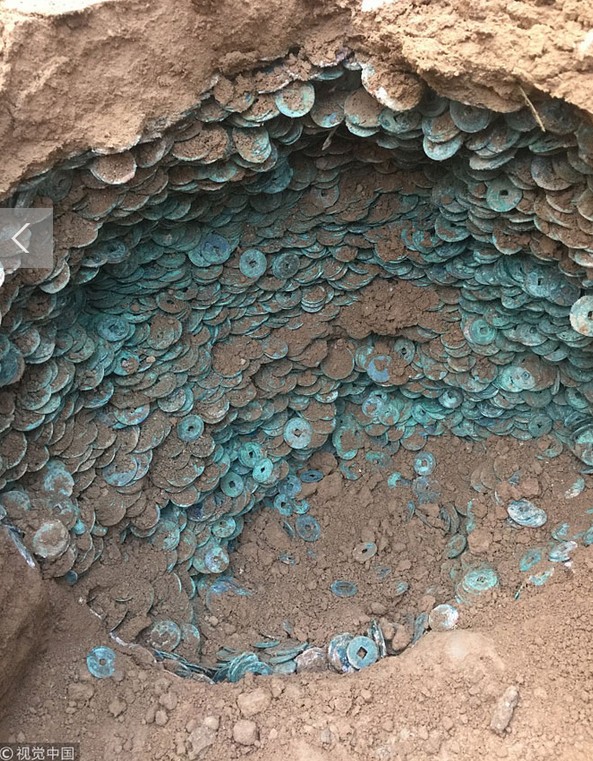

.thumb.jpg.95344db3aeef0a4c6c73420daa366191.jpg)

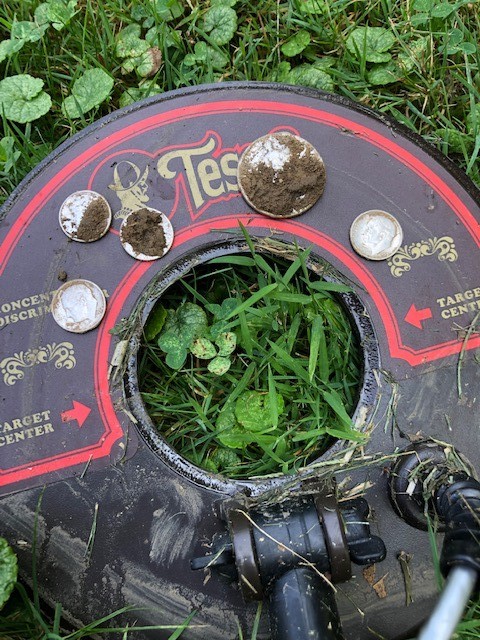
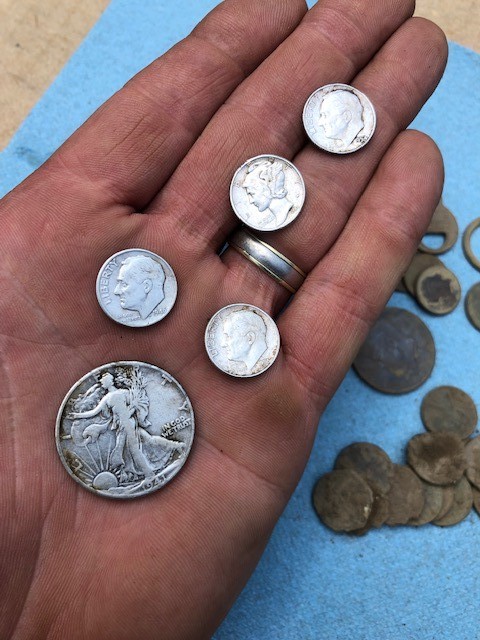
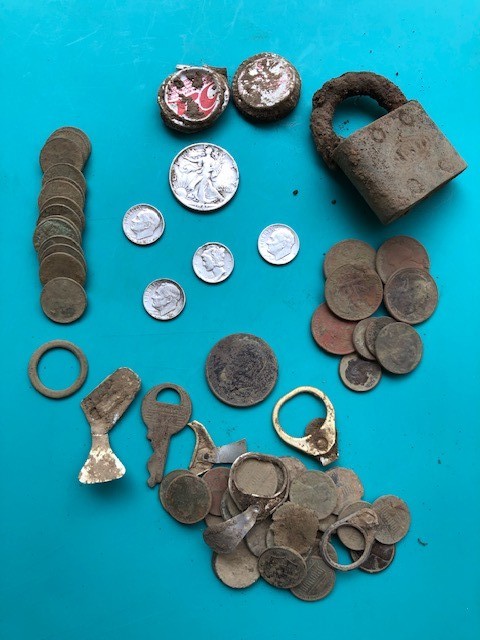
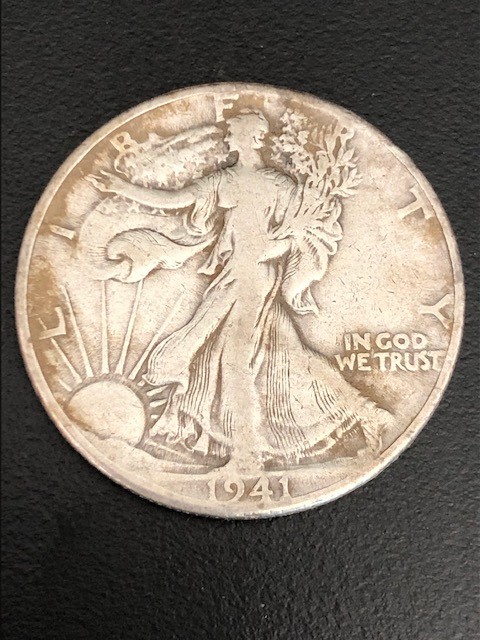
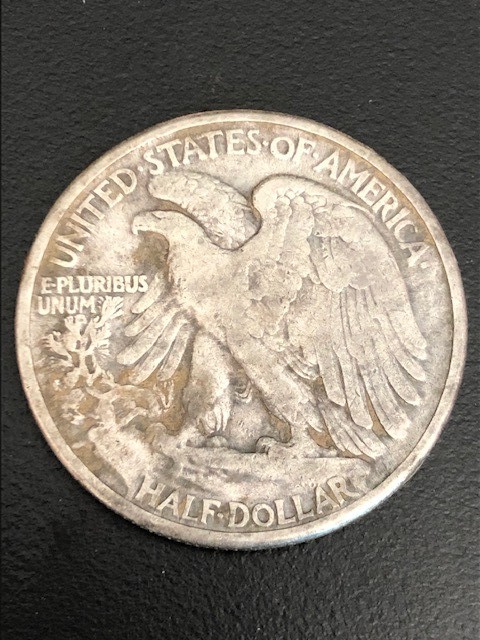


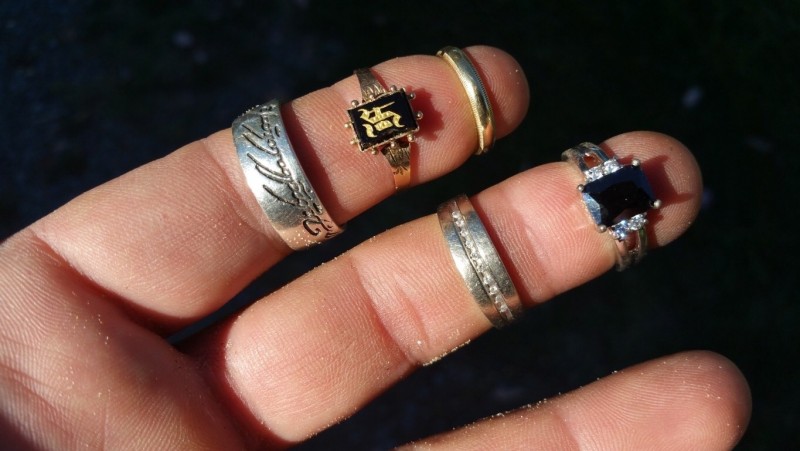


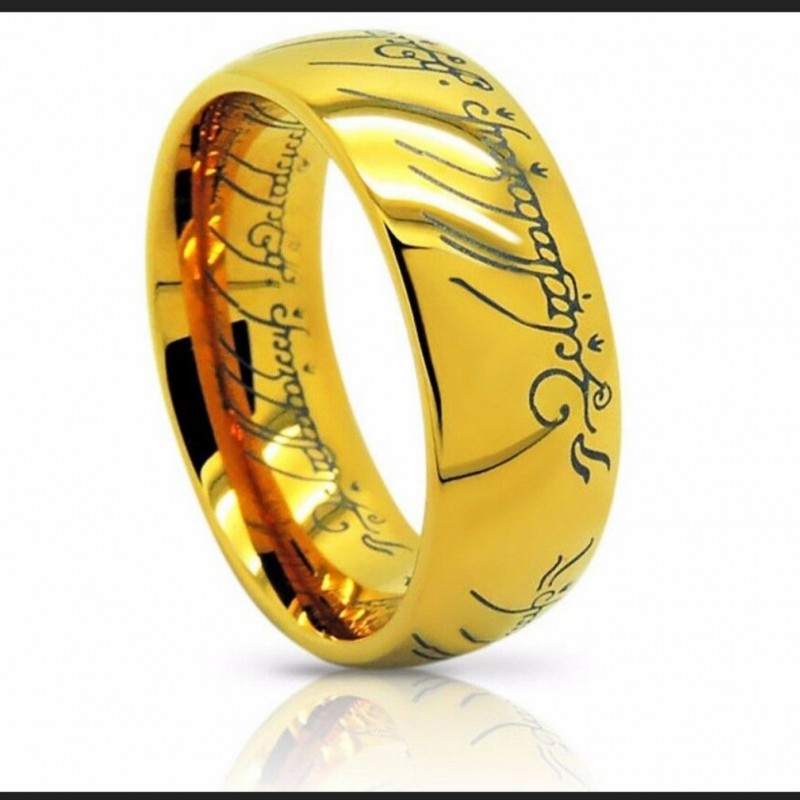

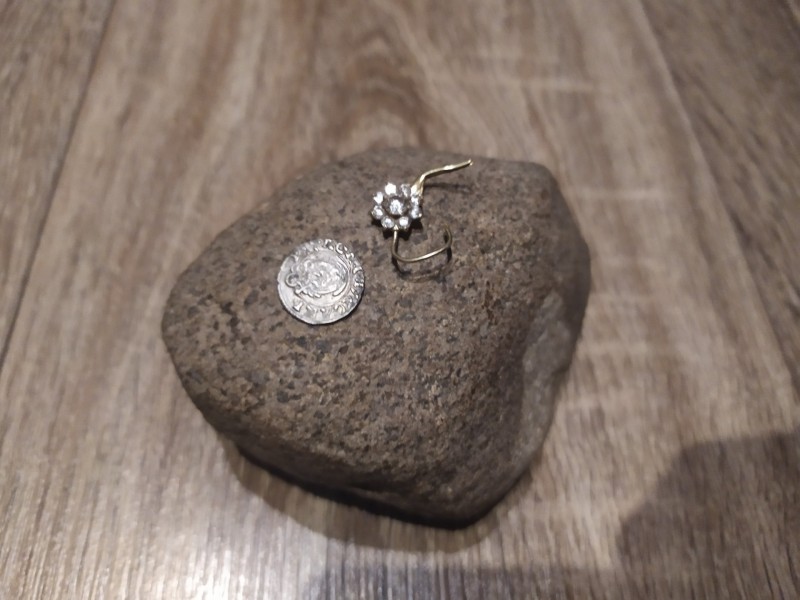
.thumb.jpg.8761b3d9b3da119b9e6d1912f67275ad.jpg)


